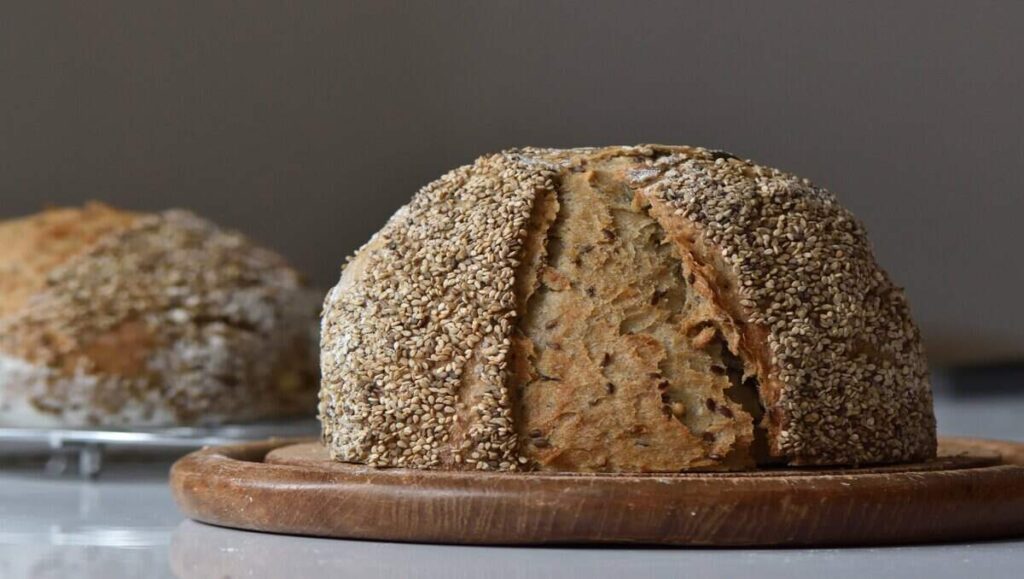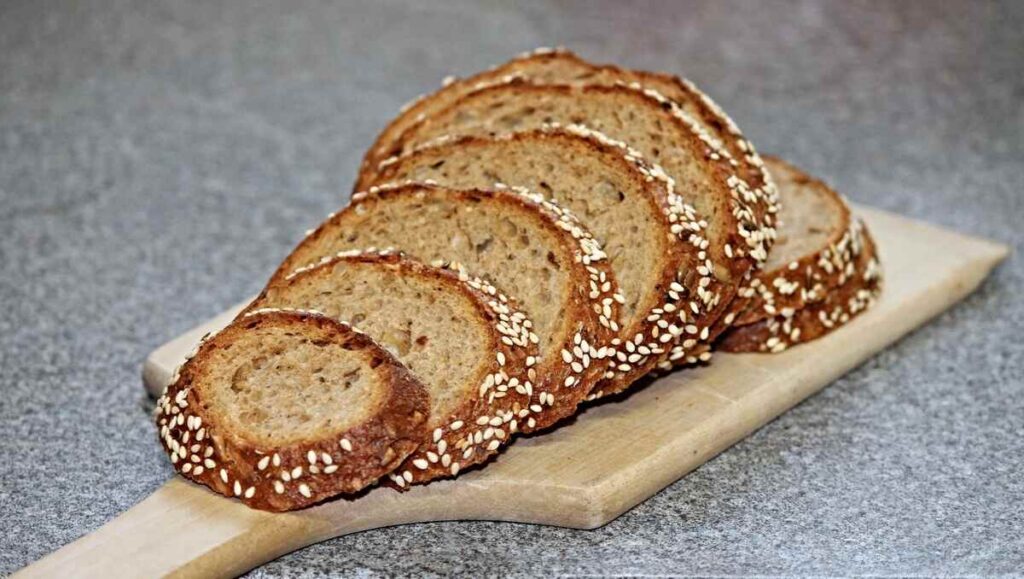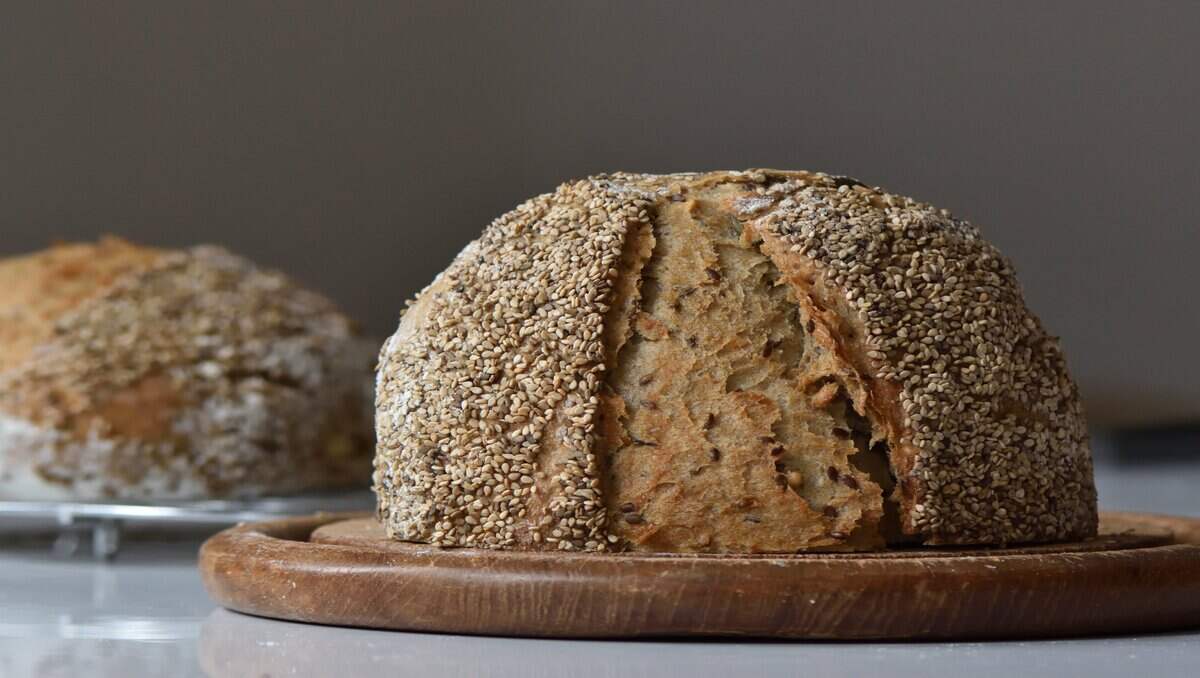Introduction
Have you ever come across a bread that’s naturally sweet, deeply nourishing, and made with just a handful of wholesome ingredients—no flour, yeast, or sugar? That’s “5 Heavenly Manna Bread Recipes. Inspired by ancient traditions and deeply rooted in biblical references, manna bread is a sprouted grain bread known for its rich, moist texture and subtle sweetness.
Whether you’re on a health journey, trying a plant-based lifestyle, or simply curious about baking something new, this bread is a beautiful reminder that simple food can be incredibly satisfying.
In this blog post, we’ll walk through everything you need to know to make manna bread at home: its origin, nutritional benefits, ingredients, tools, step-by-step preparation, and more.

What is “5 Heavenly Manna Bread Recipes?
“5 Heavenly Manna Bread Recipes is a type of flourless, naturally leavened, sprouted grain bread. It is usually made by sprouting whole grains (most often wheat), grinding them into a mash, and baking the mash at low temperatures. The result is a sweet, cake-like bread that’s dense and moist—almost like a hybrid between bread and fruitcake.
Unlike conventional bread, manna bread doesn’t rely on yeast or sourdough cultures to rise. Instead, it taps into the power of sprouting—transforming grains into enzyme-rich, nutrient-dense food.
Origin of “5 Heavenly Manna Bread Recipes
The term “mana” refers to the food that, according to the Bible, was provided by God to the Israelites during their journey in the wilderness. The modern interpretation—manna bread—was popularized in the 20th century as part of the natural food movement.
This bread is based on ancient methods of preparing grains, where they were soaked, sprouted, and gently baked or dried. Companies like Manna Organics have commercialized this style, but homemade versions often taste fresher and allow for creative freedom.
Ingredients
Here’s what you’ll need to make one loaf:
| Ingredient | Quantity |
| Whole wheat berries (or other grains like spelt, barley) | 2 cups (dry) |
| Filtered water | For soaking |
| Sea salt (optional) | 1/4 tsp |
| Raisins or dates (optional, for sweetness) | 1/4 cup |
| Cinnamon, nutmeg, or cardamom (optional) | To taste |
| Nuts/seeds (optional) | 1/4 cup chopped |

Equipment Needed
- Large glass bowl or jar (for sprouting)
- Fine mesh strainer or sprouting lid
- Food processor or meat grinder
- Mixing bowl
- Baking tray or loaf pan
- Parchment paper
- Oven or dehydrator
Step-by-Step Preparation
Step 1: Soak and Sprout the Grains
- Soak 2 cups of whole wheat berries in filtered water for 8–12 hours.
- Drain and rinse thoroughly.
- Leave them to sprout for 1–2 days, rinsing 2–3 times daily. You’ll know they’re ready when little tails (about 1/4 inch) appear.
Step 2: Grind the Sprouted Grains
- Place the sprouted grains into a food processor or meat grinder.
- Pulse until you get a thick mash. Don’t over-process—you want a coarse texture.
Step 3: Add Optional Ingredients
- Fold in chopped raisins, nuts, cinnamon, or any other natural flavorings.
- Add a pinch of salt to enhance flavor.
Step 4: Shape the Loaf
- Preheat your oven to 250°F (120°C).
- Line a baking tray with parchment paper.
- Form the mash into a loaf shape or use a loaf pan.
- Optional: lightly score the top for a rustic look.
Step 5: Bake Slowly
- Bake for 2 to 3 hours until the outside is firm and the inside is soft and dense.
- Let it cool completely before slicing.
Note: For a raw version, dehydrate at 115°F for 6–8 hours until set.
Nutritional & Health Benefits
- High in fiber: Supports digestion and gut health.
- Enzyme-rich: Sprouting activates enzymes that aid nutrient absorption.
- Naturally sweet: No added sugar needed.
- Low glycemic index: Good for stable energy levels.
- Complete protein: Sprouted grains have better amino acid profiles.
- Vegan & flourless: Great for people with dietary sensitivities.
According to a study published in the Journal of Food Science, sprouting grains can increase antioxidant levels by up to 200% and boost vitamins like B and C.
Best Ways to Serve “5 Heavenly Manna Bread Recipes
- Warm with nut butter: Almond or peanut butter adds a creamy contrast.
- With fresh fruit: Blueberries, bananas, or apples complement its natural sweetness.
- As a snack or breakfast: Pair with herbal tea or coffee.
- As dessert: Add a drizzle of honey or maple syrup.
Calories & Nutritional Info (Per Slice)
| Nutrient | Amount (Approx.) |
| Calories | 120 |
| Protein | 4g |
| Carbs | 22g |
| Fiber | 4g |
| Fat | 1g |
| Sugar (natural) | 5g |
Prep Time & Cook Time
| Task | Time Needed |
| Soaking | 8–12 hours |
| Sprouting | 24–48 hours |
| Prep/Mixing | 15 minutes |
| Baking | 2–3 hours |
| Total Time | ~3 days (passive) |
Additional Tips
- Use other grains like rye, spelt, or barley for variation.
- Don’t overbake. The goal is a soft, moist interior—not a dry loaf.
- Store in the fridge. Keeps well for up to 1 week.
Conclusion
“5 Heavenly Manna Bread Recipes is more than a recipe—it’s an experience. A celebration of simplicity, patience, and nourishment. By sprouting grains and baking them gently, you’re creating a loaf that’s deeply connected to ancient traditions and modern wellness. It’s satisfying, nutritious, and surprisingly easy once you’ve done it once.
Give it a try, and you might find yourself ditching traditional bread for good.
FAQs
Q1: Can I freeze “5 Heavenly Manna Bread Recipes?
Yes! Slice before freezing and reheat as needed.
Q2: Is it gluten-free?
Not if made with wheat. But you can try gluten-free grains like millet or buckwheat.
Q3: Can I use a dehydrator instead of an oven?
Absolutely. It works great if you prefer a raw food approach.
Q4: Can I make it sweet or savory?
Yes! Add fruits for sweetness or herbs and garlic for savory versions.
